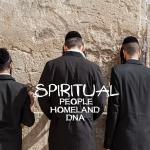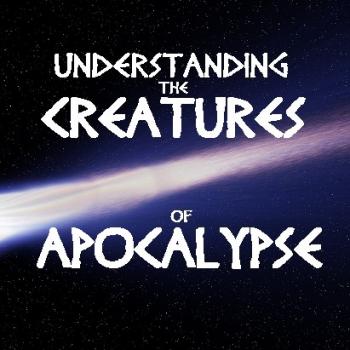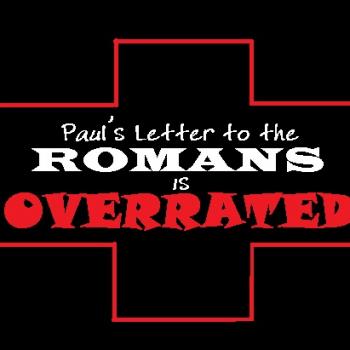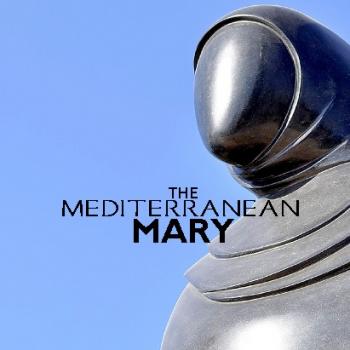
Growing numbers of biblical scholars believe that any mention of Jews in Scripture translations is erroneous.
Just another quick post here. I have been blogging recently on what is meant by “people,” particularly the Jewish people. Then, in my last post, I got into the subject of a Jewish homeland and “Jewish DNA.“ What was presented there makes apparent that there were no Jews 2,000 years ago. But if indeed there were no Jews before 500 CE, why then are Biblical translations filled with references to Jews?
Before reading on, I encourage you to read these earlier posts.
And if you haven’t already, watch this video presentation—
What About Biblical Jews?
So what about all the times we read about Jews in the Scriptures? I open up my English Bible translation, and I see Jews mentioned all over in various books. What gives?
Some weeks ago, on Good Friday, English-speaking Catholics heard the Passion According to John (18:1—19:42). Repeatedly this story, badly translated into English, mentions “the Jews” in the most horrific light imaginable for Christians. This disastrous persistence in anachronism carelessly committed by parishes throughout the U.S. was addressed decades ago by Context Scholar John Pilch. Read his thoughts concerning Biblical Jews here.
Now you might be thinking something like,
What’s the big deal, Fellow Dying Inmate? We all know that Jesus was a Jew, right? Heck, Jesus was a Jewish Rabbi. And Jesus’ followers were all Jews. Paul was a Jew who converted to Christianity. Doesn’t that end the discussion of whether Jews go back thousands of years? Biblical Jews? Of course, there were biblical Jews!
Scholars Explain Biblical Jews
Catholics and other Christians should take seriously what various scholars like John Pilch have to say about so-called biblical Jews like Jesus. Another scholar to take seriously is Pilch’s colleague, Dr. John Elliott. He writes:
Jesus was neither a ‘Jew’ nor a ‘Christian’. This is true at diverse levels and stages of discourse. For one thing, Jesus was neither a ‘Jew’ nor a ‘Christian’ in the sense that these terms are used today in ordinary discourse.
As Jacob Neusner and a growing number of scholars have been emphasizing for some time now, the concept ‘Jew’ as understood today derives not from the first century but from the fourth and following centuries CE. It denotes persons shaped by and oriented to not only Torah and Tanakh but Mishnah, Midrashim and Talmudim. (See Jacob Neusner, Judaism and Christianity in the Age of Constantine: History, Messiah, Israel, and the Initial Confrontation, Chicago Studies in the History of Judaism; Chicago: University of Chicago Press, 1987, p. ix.)
In similar fashion the name ‘Christian’ as used and understood today designates persons marked more by doctrines and events of the fourth and later centuries (trinity of the godhead, double natures of Christ, consolidating and hierarchically structured catholic church) than by those of the first. (please see Rosemary Radford Ruether, ‘Judaism and Christianity: Two Fourth-Century Religions’, Sciences Religieuses/Studies in Religion 2, 1972, pp. 1-10)
Biblical scholar Elliott continues …
Thirty years ago Rosemary Radford Ruether had already pointed out that it was in the fourth century that Judaism and Christianity assumed the features by which they are known today. Indeed, Jewish scholar Daniel Boyarin (Dying for God: Martyrdom and the Making of Christianity and Judaism [Stanford: Stanford University Press, 1999], p. 6) cites Ruether with approval and aptly describes both collectivities as ‘twins in the womb’ until the fourth century.
To call Jesus a ‘Jew’ or a ‘Christian’, as these words are understood in the vernacular today, not only confuses the matter historically, but has led to disastrous social and inter-religious consequences.
In the lexicon entry on Ἰουδαῖος in A Greek-English Lexicon on the New Testament and Other Early Christian Literature (2000, p. 478), Frederick Danker laments that:
‘Incalculable harm has been caused by simply glossing Ἰουδαῖος with ‘Jew’, for many readers or auditors of the Bible translations do not practice the historical judgment necessary to distinguish between circumstances and events of an ancient time and contemporary ethnic-religious-social realities, with the result that anti-Judaism in the modern sense of the term is needlessly fostered through biblical texts.’
So No Biblical Jews?
Elliott explains,
“Despite the growing number of scholars in agreement with these positions [see below—FDI], use of ‘Jew’ and ‘Judaism’ in reference to Israel and Israelites in the Second Temple period and use of ‘Christian’ and ‘Christianity’ in reference to Jesus and his earliest followers continue unabated in both professional and lay circles.”
I invite everyone to download and carefully read John Elliott’s tour de force,












